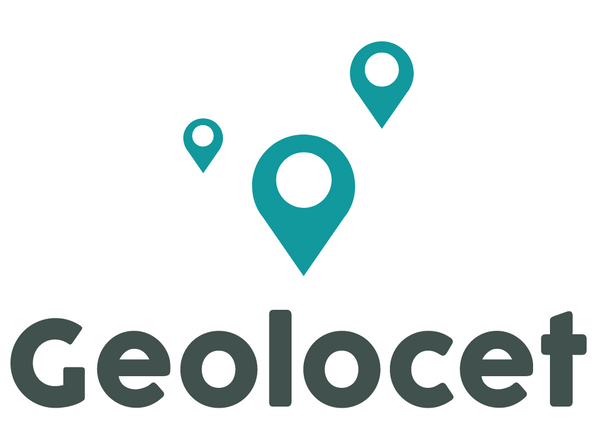Contents
Key Applications of LLMs in Location Intelligence
1. Demographics Data
Demographics data encompasses a broad range of population characteristics, such as age, gender, income, education level, and more. Understanding these attributes is crucial for businesses seeking to optimize market strategies and urban planners aiming to forecast population trends. LLMs offer several innovative applications in this domain:
1.1 Data Integration and Synthesis
LLMs excel in aggregating and synthesizing diverse sources of demographic data. They can merge structured data from official census reports with unstructured data from social media posts, customer reviews, and news articles. For instance, an LLM can combine census data with social media sentiment analysis to provide a more nuanced view of community attitudes and behaviors.
Example: A retail chain looking to expand into new regions might use LLMs to integrate demographic data with local social media trends to better understand potential customer preferences and regional differences.
1.2 Contextual Analysis
LLMs can analyze demographic data within specific contexts to offer deeper insights. For example, they can interpret how demographic shifts impact local economic conditions or social dynamics. This contextual understanding helps in making more informed decisions related to market entry, product development, and community outreach.
Example: A city government might use LLMs to analyze demographic changes alongside economic data to plan infrastructure improvements or social services.
1.3 Predictive Analytics
By examining historical demographic data, LLMs can generate forecasts about future population trends. This predictive capability is essential for businesses and urban planners to anticipate changes and adjust strategies accordingly.
Example: An e-commerce company might use LLMs to predict future purchasing behaviors based on current demographic trends, helping them tailor their marketing strategies.
1.4 Trend Analysis
LLMs can identify emerging trends within demographic data that might not be immediately obvious. This can include shifts in population density, changes in consumer behavior, or evolving social attitudes.
Example: An urban planner could use LLMs to detect trends in migration patterns and adjust housing policies to accommodate new population distributions.
2. Points of Interest (POI) Data
Points of Interest data includes information about notable locations such as restaurants, shops, landmarks, and services. Effective use of POI data enhances location-based services and provides valuable insights for various applications:
2.1 Enhanced Search and Recommendations
LLMs improve search algorithms and recommendation systems by analyzing POI data along with user preferences and historical behavior. They can provide more relevant and personalized recommendations based on contextual understanding.
Example: A travel app can use LLMs to recommend restaurants, attractions, and accommodations based on user reviews, preferences, and current trends.
2.2 Contextual Enrichment
LLMs can enrich POI data by extracting additional context from unstructured sources like news articles, blogs, and social media. This enrichment adds depth to the POI information, making it more valuable for users.
Example: A tourism platform might use LLMs to gather recent reviews and news about local landmarks to offer up-to-date information on attractions.
2.3 Sentiment Analysis
LLMs can perform sentiment analysis on user-generated content related to POIs. This analysis helps understand public sentiment and satisfaction levels, which can be useful for businesses to gauge their reputation and improve their offerings.
Example: A restaurant chain could analyze customer reviews to assess satisfaction levels and identify areas for improvement.
2.4 Dynamic POI Management
LLMs can assist in dynamically updating POI data by analyzing trends and changes in user behavior. This ensures that POI databases remain current and accurate.
Example: A navigation app might use LLMs to continuously update its POI database based on user-generated content and local events.
3. Address Cleansing
Address cleansing involves standardizing and validating address data to ensure accuracy and consistency. LLMs enhance this process through several key capabilities:
3.1 Automated Validation and Standardization
LLMs can automatically validate and standardize addresses by recognizing and correcting variations in address formats. This reduces errors and inconsistencies in address databases.
Example: A logistics company could use LLMs to ensure that delivery addresses are formatted consistently and accurately, reducing delivery errors.
3.2 Contextual Error Detection
By understanding the context in which addresses are used, LLMs can identify and rectify errors that might not be apparent through traditional rule-based systems alone. This includes detecting discrepancies in address formats or identifying incorrect addresses based on geographic or administrative boundaries.
Example: An e-commerce platform might use LLMs to detect and correct address errors in customer orders before processing shipments.
3.3 Geocoding and Reverse Geocoding
LLMs can assist in geocoding (converting addresses into geographic coordinates) and reverse geocoding (converting geographic coordinates into addresses). They handle complex address formats and provide accurate geocoding results, which are essential for mapping and location-based applications.
Example: A real estate app could use LLMs to convert property addresses into geographic coordinates for mapping and location analysis.
3.4 Address Enrichment
LLMs can enrich address data by adding contextual information such as neighborhood demographics, nearby amenities, or historical data. This additional information enhances the utility of address data for various applications.
Example: A marketing firm might use LLMs to enrich customer addresses with demographic data to better target their campaigns.
Additional Aspects of LLMs in Location Intelligence
1. Natural Language Queries
LLMs can interpret and respond to natural language queries related to location data. This capability allows users to interact with databases using conversational language, making it easier to extract and analyze information without requiring specialized knowledge.
Example: A user could ask a location-based service, "What are the best restaurants near me with high ratings?" and receive personalized recommendations based on the latest data.
2. Data Fusion and Integration
LLMs facilitate the fusion and integration of diverse data sources, including structured data (e.g., databases) and unstructured data (e.g., social media posts, news articles). This comprehensive approach provides a more holistic view of location-related information.
Example: An urban planning department could integrate data from various sources to analyze traffic patterns, population density, and public sentiment in a unified framework.
3. Anomaly Detection
LLMs can detect anomalies or irregularities in location data that might indicate potential issues or opportunities. This capability is useful for identifying unexpected trends or outliers that require further investigation.
Example: A transportation authority might use LLMs to identify unusual traffic patterns that could indicate road safety issues or infrastructure needs.
4. Multi-Language Support
LLMs can process and analyze location data in multiple languages, making them valuable for global applications. This support allows for the integration and analysis of location data from diverse linguistic and cultural contexts.
Example: A global travel company could use LLMs to analyze reviews and POI data from different countries, providing insights into international travel trends and preferences.
Pros and Cons of LLMs in Location Intelligence
Pros:
- Enhanced Data Processing: LLMs can handle large volumes of data from various sources, offering comprehensive and nuanced insights.
- Contextual Understanding: Their ability to understand and generate human-like text enables more accurate interpretation of complex data, such as user reviews and social media posts.
- Predictive and Analytical Capabilities: LLMs offer predictive analytics and trend analysis, aiding in strategic decision-making and forecasting.
- Improved User Interaction: Natural language processing allows for more intuitive and user-friendly interactions with location-based systems.
- Data Enrichment and Fusion: LLMs can enrich and integrate diverse data sources, providing a more detailed and holistic view of location intelligence.
Cons:
- Data Privacy Concerns: Handling large amounts of potentially sensitive data raises privacy and security concerns that must be addressed.
- Dependence on Data Quality: The accuracy of LLM-generated insights is dependent on the quality of the input data. Poor-quality data can lead to misleading conclusions.
- Complexity and Cost: Implementing and maintaining LLM systems can be complex and costly, requiring significant investment in infrastructure and expertise.
- Bias and Fairness: LLMs can inherit biases present in their training data, leading to biased analyses or recommendations that need to be carefully managed.
- Interpretability: The decision-making processes of LLMs can be opaque, making it challenging to understand how specific insights or predictions were derived.
Conclusion
The application of Large Language Models in location intelligence represents a significant advancement in how spatial data is processed and utilized. By enhancing the handling of demographics data, POI data, and address cleansing, LLMs offer valuable insights and improve decision-making across various domains. Their capabilities extend to natural language queries, data fusion, and multi-language support, further enriching location intelligence.
However, the use of LLMs also presents challenges, including data privacy concerns, reliance on data quality, and potential biases. As technology evolves, the integration of LLMs in location intelligence will likely become more sophisticated, offering deeper insights and refined tools for navigating the complexities of spatial data.
Organizations that embrace these advancements while addressing potential drawbacks will be well-positioned to leverage location intelligence effectively, making informed decisions in an increasingly interconnected world. The future of location intelligence, powered by LLMs, holds the promise of more accurate, insightful, and actionable data-driven strategies.
---
To leverage the power of Location Intelligence for your business, reach out to Geolocet at contact@geolocet.com. Our team offers customizable datasets and services tailored to your specific needs, ensuring you have the precise data required to make informed decisions and drive success.

